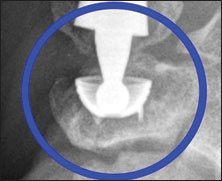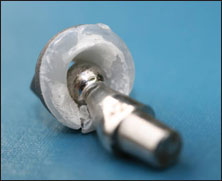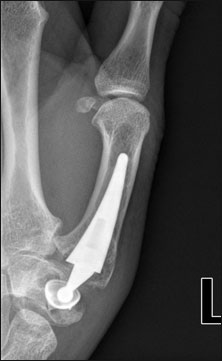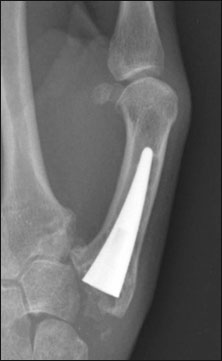Implant preserved thumb function in patients with trapezial osteoarthritis
The researchers found patients preferred trapezial-metacarpal joint replacement with the implant studied over traditional excision arthroplasty.
Despite generally poor reports in the literature of trapezial-metacarpal joint replacement for symptomatic osteoarthritis, one implant that researchers studied provided patients with good function and was associated with few complications, according to the findings.
“Do not write off arthroplasty,” Nicholas J. Goddard, FRCS, of Royal Free Hospital, in London, told Orthopaedics Today Europe. “There have been some bad implants, but this implant works well.”
The study design
In his case series, Goddard reviewed 202 patients with symptomatic trapezial-metacarpal osteoarthritis who underwent trapezial-metacarpal joint replacement with the ARPE implant (Biomet; Warsaw, Ind., USA) during a 16-year period.
He enrolled 43 men and 159 women who had an average age of 58.3 years. The mean follow-up was 7.8 years, although Goddard followed some patients out to 16 years.
The ARPE implant is a ball and socket design with hydroxyapatite (HA)-coated metacarpal stems, HA-coated high-density polyethylene cobalt chrome hemispherical sockets, a modular 4-mm head and neck components that have variable offsets, according to Goddard.


The implant shows radiological evidence of wear with “bottoming out” of the head in the centre of the cup. The second photo is of the explanted cup and head.
Images: Goddard NJ
“The implant works well and compares favorably to the alternatives out there,” Goddard said in an interview with Orthopaedics Today Europe.
Good implant preservation
Goddard found 94% of the 227 prostheses used in the study remained in place and continued to function well in patients.
There were a few early complications with four dislocations that surgeons either reduced or revised with a different component, he noted.
“If you get the dislocations early, you can put them back closed, but more often you have to open them and revise them,” Goddard said.
Late complications in the series included 11 dislocations that were revised to simple excision arthroplasty, nine loose implants, one trapezial fracture and two implants that showed wear. Goddard noted 6% of the patients with late complications underwent revisions; 4% of them had asymptomatic loosening.


Pictured is an excision arthroplasty following removal of the trapezium along with the cup. The head/neck component has been removed but the intramedullary stem remains in the metacarpal shaft. This is an advantage over other implants since the head/neck is “male fitting” so the stem can be left in situ without any problems. Other implants have a “male” metacarpal and “female” head which could pose problems.
Patients prefer prosthesis
Goddard said there is no objective evidence of patient satisfaction with the implant from discriminatory tests, but, when asked, patients preferred surgical arthroplasty to excision arthroplasty and said they were happier with the ARPE implant.
“[The implant] preserves length and stability and patients notice and they are pleased with the outcomes,” he said. “Some patients have an excision on one side and implant on the other and favor the implant.”
For low-demand patients Goddard recommended placing the implant in the patient’s non-dominant hand.
“If the implant fails, you just take out the trapezium and you have an excision arthroplasty,” he said. “The patient has the benefit of 10 [years] to 15 years of a good thumb.” – by Renee Blisard Buddle
- Reference:
- Goddard N. Paper #67. Presented at: American Society for Surgery of the Hand Annual Meeting. Oct. 3-5, 2013; San Francisco.
- For more information:
- Nicholas J. Goddard, FRCS, can be reached at Pond St., Hamstead, London, GBR NW3 2QG UK; email: nicholasgoddard@nhs.net.
- Disclosure: Goddard has no relevant financial disclosures.
